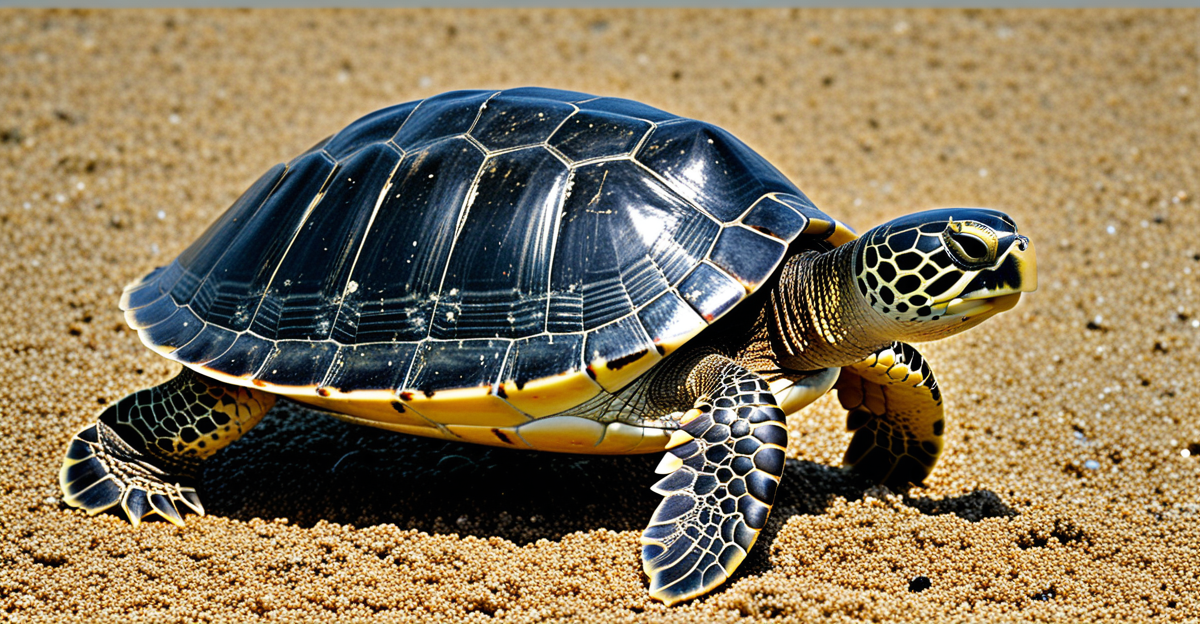Innovative UK Coastal Development Strategies for Marine Turtle Conservation
Balancing sustainable coastal development with effective marine turtle conservation UK is increasingly crucial as coastal zones face development pressures. The UK is embracing innovative coastal protection methods that safeguard turtle nesting habitats without halting progress. These approaches prioritize habitat preservation by integrating environmental considerations early into planning.
Recent strategies include adapting shoreline designs to minimize habitat disruption—such as elevating or redirecting footpaths and controlling artificial lighting to reduce disorientation for turtle hatchlings. Incorporating soft engineering techniques like dune regeneration aligns with marine turtle conservation UK goals by restoring natural barriers protecting nests.
Also to see : Comprehensive feeding tips for uk pet owners: nourishing rescued hedgehogs the right way
Regulatory frameworks now emphasize sustainable practices, mandating environmental impact assessments that specifically evaluate threats to turtle habitats. Developers are encouraged to use eco-friendly materials and construction methods, enabling progress while mitigating ecological harm.
By fostering an integrative approach that couples technological innovation with policy compliance, the UK leads in blending coastal development with marine wildlife protection. This synergy between advancement and conservation exemplifies modern innovative coastal protection and serves as a model for global sustainability efforts impacting vulnerable species.
In parallel : Exploring the influence of uk citizen scientists in tracking seasonal wildlife patterns
Innovative UK Coastal Development Strategies for Marine Turtle Conservation
Balancing sustainable coastal development with protection of marine turtle habitats in the UK involves cutting-edge approaches designed to reduce human impact on nesting areas. These strategies focus on maintaining natural coastal processes crucial for turtle survival while allowing responsible development to continue.
One key strategy is altering shoreline infrastructure to avoid critical nesting zones, a practice integral to innovative coastal protection. This includes redirecting paths and using low-impact materials that blend with the environment, thereby limiting habitat disruption. Additionally, managing artificial lighting near beaches mitigates hatchling disorientation, a significant threat identified in marine turtle conservation UK efforts.
Local authorities now integrate habitat mapping into planning permits, ensuring developments respect sensitive sites. Environmental impact assessments have grown more sophisticated, prioritizing the needs of turtles and associated ecosystems during project evaluations. This regulatory evolution supports sustainable coastal development that aligns with wildlife preservation.
Together, these advancements demonstrate a proactive UK approach blending modern development with ecological responsibility, offering a replicable model for regions seeking to harmonize human activity with marine turtle conservation goals.
Innovative UK Coastal Development Strategies for Marine Turtle Conservation
The UK’s approach to marine turtle conservation UK integrates innovative coastal protection with sustainable coastal development to protect vulnerable turtle nesting sites. Advanced coastal management strategies now carefully evaluate development projects for potential impacts on turtle habitats. This evaluation promotes designs that reduce physical disturbance, avoid critical nesting zones, and maintain the natural coastal dynamics turtles rely on.
Increasingly, artificial lighting controls are implemented to prevent hatchling disorientation, a significant threat during emergence. Elevating pathways or redesigning public access routes directs human activity away from sensitive nesting areas. These measures not only support turtles but also encourage community awareness and engagement in conservation efforts.
Regulatory bodies now emphasize environmental impact assessments focused specifically on marine turtle conservation UK, requiring developers to incorporate mitigation strategies early. Such foresight enables preservation of nesting habitats without hindering local economic growth. The implementation of soft engineering methods like dune regeneration further exemplifies a commitment to blending infrastructure with ecosystem health.
In summary, the UK’s innovative coastal protection frameworks exemplify how sustainable coastal development can harmonize human progress with critical species preservation. This balance is vital for ensuring long-term survival of marine turtles amid ongoing coastal change.
Innovative UK Coastal Development Strategies for Marine Turtle Conservation
Innovative coastal protection in the UK increasingly targets the delicate balance between development and marine turtle conservation UK. As coastal areas face growth, sustainable coastal development strategies must prioritize preserving nesting habitats while accommodating human needs.
Advanced approaches include designing infrastructure that avoids disrupting key turtle nesting sites. For example, using elevated walkways instead of sandy paths reduces direct habitat disturbance. Artificial lighting controls—such as using turtle-friendly wavelengths or timed dimming—help prevent hatchling disorientation, a major conservation concern.
Environmental planning now incorporates detailed habitat mapping to inform site selection and minimize environmental impacts. Regulatory frameworks incentivize developers to implement eco-sensitive construction methods, aligning development projects with marine turtle conservation UK objectives.
The growing emphasis on sustainable coastal development reflects recognition that human activity must coexist with ecosystem preservation. Through collaborative planning and emphasis on innovation, the UK sets a standard for protecting marine turtles by integrating modern development practices with ecological stewardship. This approach ensures coastal growth is not at the expense of vulnerable marine species.
Innovative UK Coastal Development Strategies for Marine Turtle Conservation
Balancing sustainable coastal development with effective marine turtle conservation UK requires adopting advanced coastal management techniques. One pivotal approach is prioritizing the preservation of turtle nesting sites by carefully planning developments around these critical habitats. This includes detailed habitat mapping to identify sensitive zones, enabling developers to avoid direct disturbance during construction.
Minimizing physical disruption is achieved by integrating innovative coastal protection methods such as elevating walkways to reduce trampling and using eco-friendly materials that cause less erosion. These measures help maintain natural beach conditions vital for turtle nesting success.
Furthermore, managing environmental stressors like artificial lighting remains essential, as it directly affects hatchling orientation. The growing appreciation of these factors is reflected in recent regulatory frameworks that encourage developers to implement mitigation strategies early in project design.
Overall, the UK’s strategy emphasizes a proactive balance, ensuring that sustainable coastal development supports both economic growth and the long-term viability of marine turtle populations. This integrated approach demonstrates how innovative coastal protection can safeguard delicate marine ecosystems amid ongoing coastal expansion.
Innovative UK Coastal Development Strategies for Marine Turtle Conservation
In the UK, innovative coastal protection is transforming how development aligns with marine turtle conservation UK efforts. Advanced coastal management now prioritizes preserving turtle nesting habitats while accommodating human activity. This balance is crucial due to increasing coastal development pressures threatening turtle populations.
A central focus lies in designing infrastructure that respects turtle nesting zones by minimizing human disturbance and preserving natural features. Adjustments include the creation of buffer zones and the strategic placement of pathways to reduce trampling of nests. Using materials that mimic natural substrates further supports habitat integrity and aligns with sustainable coastal development principles.
Regulatory frameworks strongly incentivize developers to adopt environmentally sensitive practices. Environmental impact assessments ensure proposed projects consider turtles’ ecological needs, reducing habitat fragmentation. These policies emphasize maintaining coastal dynamics that turtles depend on, promoting ecosystem resilience.
Collectively, these strategies demonstrate a holistic UK approach by integrating innovative coastal protection with sustainability. This synergy enables continued development progress without compromising the delicate balance necessary for successful marine turtle conservation UK amidst evolving coastal landscapes.
Innovative UK Coastal Development Strategies for Marine Turtle Conservation
Balancing sustainable coastal development with effective marine turtle conservation UK demands advanced, targeted coastal management practices. The UK prioritizes protecting critical turtle nesting habitats by integrating thorough habitat mapping early in project planning. This ensures developments avoid disrupting essential breeding zones, reducing threats from physical disturbance and habitat fragmentation.
To address the increasing need for coexistence between development and habitat preservation, regulators focus on creating adaptable frameworks that incentivize environmentally sensitive construction. This approach promotes innovative coastal protection by encouraging the use of materials and designs that maintain natural beach morphology, essential for turtle nesting success.
Recent policies also emphasize reducing indirect threats such as artificial light pollution. By adopting lighting guidelines tailored for turtle-friendly wavelengths, coastal communities help prevent hatchling disorientation. These strategies reflect a sophisticated understanding of ecosystem dynamics and underscore the UK’s commitment to reconciling development pressures with conservation priorities.
Together, these efforts demonstrate how sustainable coastal development incorporates science-driven planning and enforcement, making the UK a leader in blending human advancement with the protection of vulnerable marine species like turtles.
Innovative UK Coastal Development Strategies for Marine Turtle Conservation
Advanced UK coastal management increasingly prioritizes marine turtle conservation UK by integrating innovative coastal protection with sustainable development practices. A core focus is designing infrastructure that respects critical nesting habitats, ensuring turtles’ reproductive success is not compromised amid expanding coastal development. This is achieved through detailed environmental assessments identifying sensitive zones early in project planning.
The UK’s evolving regulatory frameworks now actively promote sustainable coastal development by requiring developers to incorporate mitigation strategies that minimize habitat disturbance. For example, soft engineering solutions like dune restoration work harmoniously with natural processes, preserving nesting beaches while supporting resilience against erosion.
Efforts to control artificial lighting and restrict human traffic in nesting areas also exemplify these strategies. Collectively, these measures underscore the growing need to balance human activity with the ecological requirements of vulnerable marine turtles. By fostering collaboration between developers, policymakers, and conservationists, the UK advances a model of innovative coastal protection that successfully merges ecological preservation with responsible development.
Innovative UK Coastal Development Strategies for Marine Turtle Conservation
The UK’s commitment to marine turtle conservation UK drives its adoption of innovative coastal protection techniques that prioritize habitat preservation alongside growth. Advanced coastal management integrates detailed habitat assessments to identify and safeguard critical turtle nesting sites early in the planning process. This proactive mapping supports sustainable coastal development by allowing developers to design projects that avoid or minimize impacts on these delicate areas.
Balancing habitat preservation with increasing development demands necessitates adaptive strategies. For instance, infrastructure is configured to redirect human activity away from nesting zones through elevated walkways and pathway rerouting. Such measures reduce physical disturbance while maintaining public access. Controlling artificial lighting is another vital step; using turtle-friendly lighting technology reduces hatchling disorientation, directly supporting survivability.
Regulatory oversight reinforces these practices. Policies increasingly require environmental impact assessments focused on marine turtle habitats, pushing developers toward eco-conscious construction and material use. Incentives and guidance bolster compliance, ensuring that innovative coastal protection aligns with ecological priorities. This evolving framework reflects the growing necessity to harmonize human development with the stringent requirements of marine turtle conservation UK, ultimately fostering resilience in coastal ecosystems through sustainable coastal development.
Innovative UK Coastal Development Strategies for Marine Turtle Conservation
Balancing sustainable coastal development with effective marine turtle conservation UK demands a nuanced approach that prioritizes turtle nesting habitats while accommodating growth. The UK employs innovative coastal protection strategies focused on minimizing human disturbance to key sites through habitat mapping and sensitive infrastructure design.
In practice, developments now integrate buffer zones and rerouted footpaths to steer activity away from nesting areas. Careful selection of construction materials that maintain natural beach profiles supports habitat stability essential for turtle reproduction. Controlling artificial lighting remains a critical component, using low-impact or shielded fixtures to reduce hatchling disorientation.
Regulatory bodies increasingly require that environmental impact assessments directly address marine turtle needs. This emphasis fosters adoption of mitigation measures early in project planning, ensuring sustainable coastal development aligns with wildlife protection. Collaborative efforts between policymakers, developers, and conservationists further enhance success by marrying technical innovation with ecological sensitivity.
Overall, this UK model exemplifies how innovative coastal protection can support thriving marine turtle populations while allowing responsible coastal growth—a balance vital for long-term conservation in face of increasing development pressures.
Innovative UK Coastal Development Strategies for Marine Turtle Conservation
The UK advances marine turtle conservation UK through innovative coastal protection methods that prioritize turtle nesting habitats amid expanding development. These strategies are rooted in detailed habitat mapping and ecological assessments conducted early in project design to avoid or minimize impacts on critical nesting sites.
Balancing growing development pressures with habitat preservation, the approach integrates sustainable coastal development practices that consider both environmental and economic factors. This includes designing infrastructure—such as raised walkways and rerouted paths—to reduce human interaction with nests while maintaining public access.
Recent regulatory shifts emphasize environmentally responsible construction techniques and materials, reducing erosion and preserving natural shoreline dynamics essential for turtle reproduction. Artificial lighting controls remain vital, employing turtle-friendly lighting that limits hatchling disorientation.
Together, these methods exemplify how innovative coastal protection and sustainable coastal development converge in the UK’s proactive conservation framework, ensuring that human coastal expansion does not compromise the long-term viability of marine turtles.
Innovative UK Coastal Development Strategies for Marine Turtle Conservation
Advanced innovative coastal protection in the UK prioritizes safeguarding marine turtle nesting sites while facilitating sustainable coastal development. This balance addresses growing coastal pressures by integrating precise habitat mapping early in project planning to pinpoint critical nesting zones. With these data-driven insights, development designs minimize physical disturbances and avoid fragmentation of turtle habitats, a key concern in marine turtle conservation UK.
To reconcile expanding infrastructure with conservation goals, the UK increasingly adopts guidelines promoting minimal-impact construction materials and elevated pathways reducing trampling on nesting beaches. These measures maintain natural beach morphology, essential for turtle reproductive success, while supporting continued development.
Regulatory shifts strongly emphasize environmentally sensitive planning. Environmental Impact Assessments (EIAs) now rigorously evaluate potential effects on turtle nesting, directing developers to incorporate mitigation strategies before construction begins. Controlling artificial lighting also remains vital; employing turtle-friendly illumination reduces hatchling disorientation, directly supporting survival rates.
Together, these approaches exemplify a sophisticated UK model where innovative coastal protection and sustainable coastal development converge. By embedding ecological priorities into planning and regulatory processes, the UK advances effective marine turtle conservation UK amidst increasing development demands along vulnerable coastlines.










